Glaucoma
What is Glaucoma?
Our optic nerve (fig.1) is the "wire" that transmits visual stimulus from the fundus to the brain. Using the term glaucoma, we refer to the damage caused to the optic nerve by increased intraocular pressure (figure 2) and inadequate blood supply.
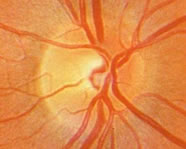 |
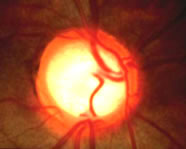 |
This is a very serious eye disease, which leads to blindness, if not treated early. Increased intraocular pressure is due to an imbalance between inflow and outflow of aqueous humor, the fluid in the anterior chamber of the eye (fig.3,4).
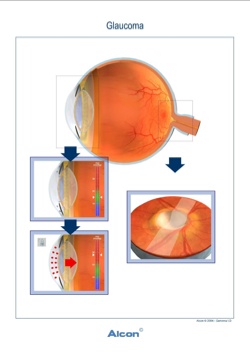 |
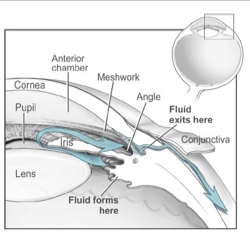 |
When and how does it occur?
Unfortunately, in most cases, glaucoma is detected accidentally during a medical examination. It has no symptoms, at least at early stages, which would lead the patient to the ophthalmologist. It is considered a multifactorial disease, since there is still no known cause of its occurrence.
However, patients with the following risk factors:
- known family history of glaucoma,
- high myopia or hyperopia,
- diabetes,
- those who underwent an eye surgery or
- use corticosteroid treatment
have a higher risk of developing glaucoma and should be regularly examined by their ophthalmologist.
 |
 |
There are many types of glaucoma. For example:
- chronic open-angle glaucoma (the most common type)
- acute glaucoma
- secondary glaucoma (due to injury, surgery, inflammation, etc.)
- congenital glaucoma etc
Examination - Diagnosis
Glaucoma examination includes measuring intraocular pressure, evaluation of the patient’s visual field and fundoscopy to check the optic nerve. Nowadays, there are special tests to detect early lesions, if necessary. The diagnosis of glaucoma involves the presence of lesions in the optic nerve, usually accompanied by corresponding lesions in our visual field of vision and most of the times increased intraocular pressure. It is essential to remember though that the absence of early symptoms often leads to patients with advanced stages of glaucoma and irreversible damage in their vision.
Glaucoma treatment include:
Glaucoma treatment include:
- Topical drops (with highly effective formulations)
- Laser therapy and
- surgery (fig. 7)
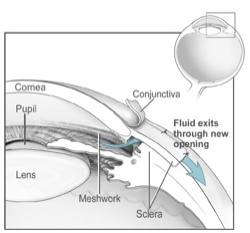
It is important for the patient to understand that in most cases glaucoma is incurable. However, early diagnosis and treatment, along with systematic monitoring, delay the development of the disease, reducing the possibility of further damage of visual field and, therefore, of his/her vision.
What should the patient do?
Every patient should undergo preventive screening up to the age of 40, and then once a year in order to measure intraocular pressure and evaluate the optic nerve. However, an Ophthalmologist should regularly monitor patients who present any of the risk factors, mentioned above.
Digital content is courtesy of Prof.Oliver Findl www.findl.at
Digital content is courtesy of Alcon Iberia
Digital content: Credit to National Eye Institute, National Institutes of Health.




